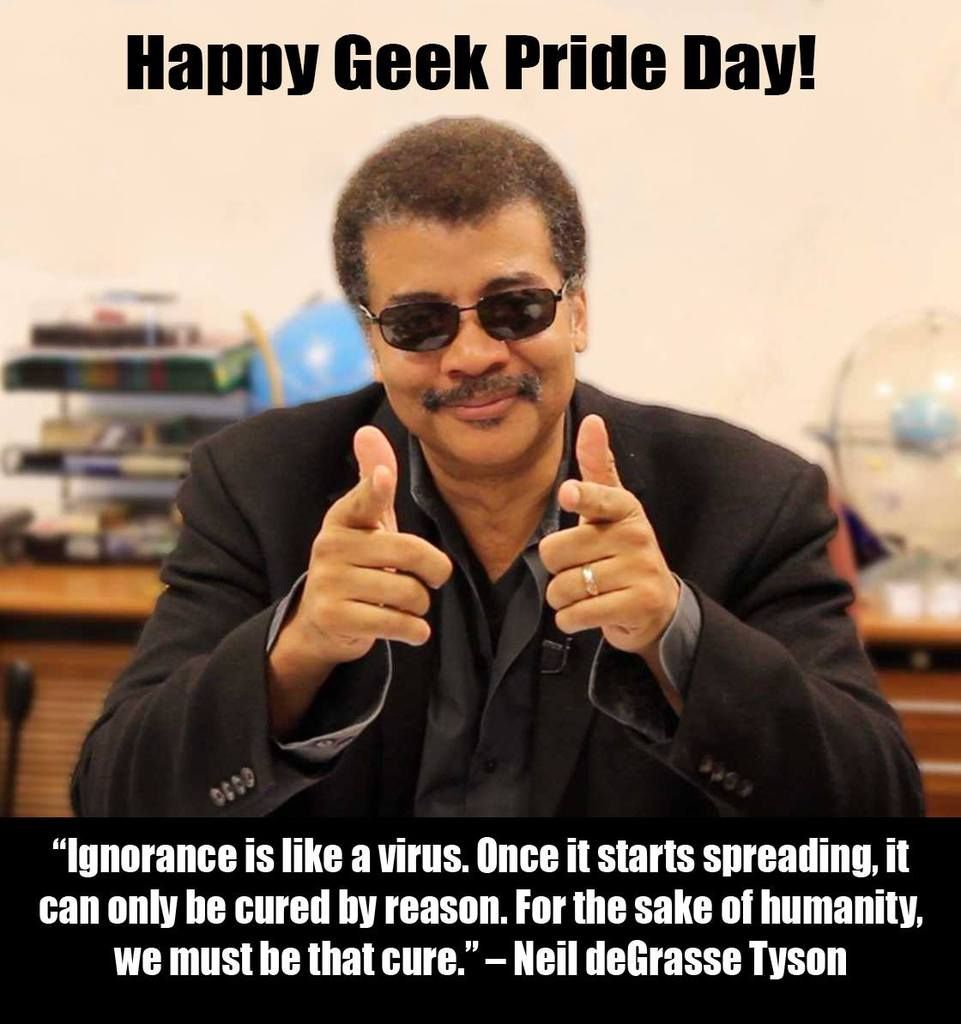Atheists & Agnostics
Related: About this forumHappy Geek Pride Day!
There has to be a few geeks mixed in our merry band of heathens! Show us your geekitude.

rurallib
(63,330 posts)
progressoid
(50,861 posts)
SouthernDemLinda
(182 posts)Theology has never been about finding the truth or telling the truth. When scientific facts contradict biblical beliefs theologians prefer to ignore science; Religious beliefs are philosophies with the illusion of knowledge where none in reality exists. Religion makes no effort to explain a thing it's all a mystery. It does not explain where life came from you just live it. Religion promotes the idea that we should all be in awe of everything; we should treat life as a problem that can never be solved by the human mind. And when evangelicals are caught preaching things that can be proven to be wrong scientifically then they claim religion is not science; the purpose of religion is to discourage immorality, when it has been proven that religion has little impact on society problems, it has little to do with morality.
Most of us have an innate moral sense which is genetically coded into us as a direct result of over one hundred thousand years of physical and social evolution. With the exception of some mutant psychopaths and religion does nothing for them or the insane.
"The world is a dangerous place to live; not because of the people who are evil, but because of the people who don't do anything about it." ~ Albert Einstein
Carl Sagan said, "The Cosmos is all that is, or ever was, or ever will be".
Religious belief never has and never will explain a thing about the universe or life in the universe. We can spend all our time reading and re-reading the Bible, with questions that can never be answered and answer that can never be questioned, written by Bronze and Iron Age Semitic tribes of illiterate sheep herders; or we can read Pale Blue Dot. Carl Sagan's book about Voyager I and 2 launched in 1977, the spacecraft that took the famous photograph of Earth from the edge of our solar system. Voyagers 1 and 2 launched into space in the summer of 1977 to explore space. Both Voyager spacecrafts were designed to last five years, and both encountered Jupiter and Saturn between 1979 and 1981; the gas giant planets and their satellites, they have continued their journeys and are now the most distant human objects in the cosmos. The last Voyager images were taken Valentine's Day, 1990, when Voyager 1 looked back from 3.7 billion miles to take a portrait of seven of the nine planets in our own solar system, including the "pale blue dot" that is Earth. The data the Voyagers returned revolutionized our knowledge of the outer planets and their intriguing array of satellites.
An amazing amount of information was collected during these experiments in space exploration, and Carl Sagan wrote about it so that the public could be informed.
Stephen Hawking cites the 1992 discovery of a planet orbiting a star other than our Sun. "That makes the coincidences of our planetary conditions (the single Sun) the lucky combination of Earth-Sun distance and solar mass far less remarkable, and far less compelling as evidence that the Earth was carefully designed just to please us human beings."
Myths won't answer any questions (they never have and never will) but some people just don't want to know the truth.
progressoid
(50,861 posts)
mountain grammy
(27,443 posts)I love this reality based group.. my favorite!
AlbertCat
(17,505 posts)progressoid
(50,861 posts)